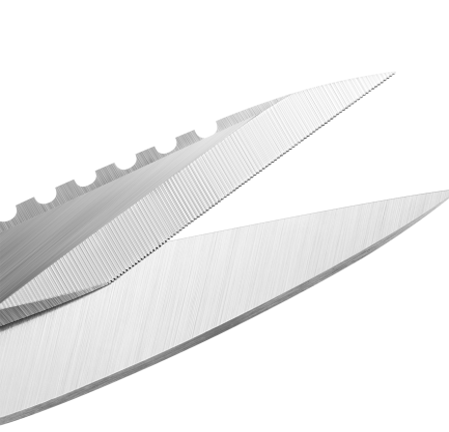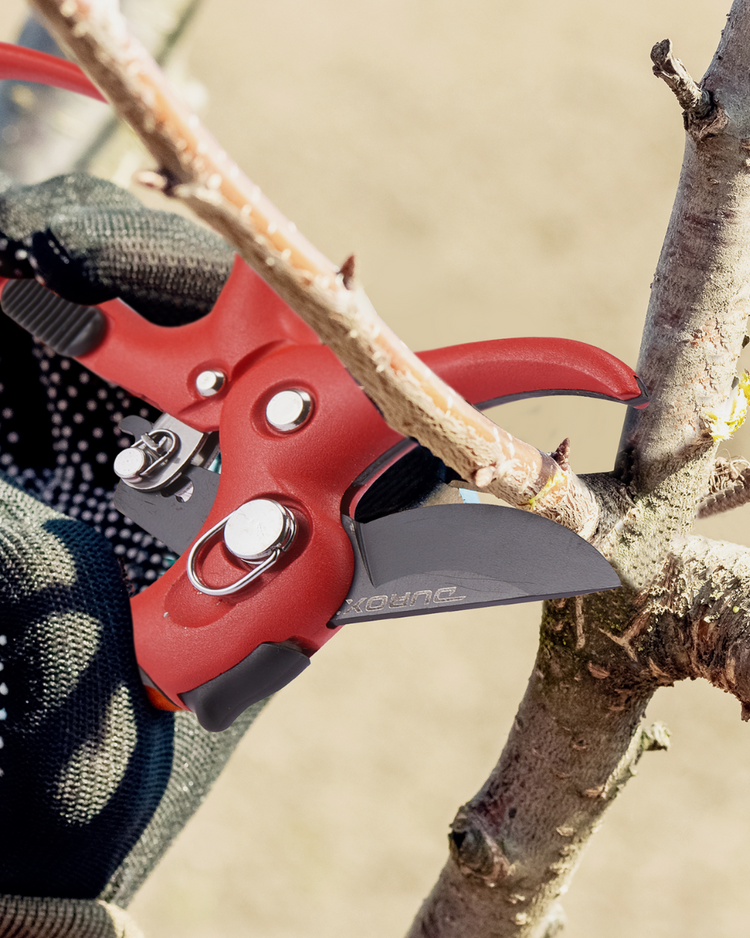
The Complete Guide to Selecting the Right Shears for Every Task
What to Consider When Purchasing Shears: A Comprehensive Guide
When it comes to purchasing shears, the options can be overwhelming. Whether you're a gardener, a crafter, a hairdresser, or simply need a reliable pair of scissors for everyday use, choosing the right shears can make a significant difference in your work's efficiency and outcome. In this guide, we'll break down everything you need to know to make an informed decision.
Types of Shears: Choosing the Right Tool for the Job
Selecting the right type of shears is crucial for achieving the best results in your specific task. Here's a breakdown of the most common types of shears:
- All-Purpose Scissors: Versatile for various tasks, from cutting paper to light fabrics, a staple in every household.
- Bandage Scissors: Designed for cutting through bandages and dressings without harming the patient.
- Craft Scissors: Sharp blades and precise tips, perfect for detailed crafting projects and intricate paper cutting.
- Electrician Scissors: Specially designed for cutting electrical wires and cables, featuring insulated handles for safety.
- Fishing Thread Scissors: Ideal for cutting fishing lines and small knots, corrosion-resistant and compact for easy portability.
- Gardening Shears: Essential for pruning plants and trimming hedges; includes:
- Anvil Pruners: Best for cutting dry, dead branches; a single blade cuts against a flat surface.
- Bypass Pruners: Provides clean cuts for live plants, reducing damage and promoting healthy growth.
- Floral Shears: Specifically designed for cutting and arranging flowers, providing clean cuts to stems and branches.
- Hedge Shears: Used for shaping and trimming hedges, ensuring clean and even cuts.
- Lawn Shears: Designed for trimming grass in hard-to-reach areas, perfect for edging and detailed lawn work.
- Lopper: Long handles for cutting thick branches, offering more leverage and reach in gardens.
- Ratchet Pruners: Enhanced cutting power with a ratchet mechanism, reducing hand strain during use.
- Hair Shears: Designed for hair cutting and thinning; includes:
- Haircutting Scissors: Sharp blades for precise haircuts, used by professionals and home stylists.
- Thinning Scissors: Features serrated edges for reducing hair volume and blending layers seamlessly.
- Kevlar Shears: Built to cut tough materials like Kevlar, essential for industrial applications and heavy-duty tasks.
- Kitchen Shears: Versatile for various kitchen tasks:
- Multipurpose Kitchen Shears: Handle various tasks including cutting herbs, opening packaging, and food preparation.
- Poultry Shears: Strong enough to cut through bones, making poultry preparation easier.
- Left-Handed Scissors: Scissors specifically designed for left-handed users, providing better ergonomics and control.
- Medical Scissors: Used in medical settings for cutting bandages, gauze, and other materials.
- Pet Grooming Shears: Specialized shears for grooming pets, including straight, curved, and thinning shears.
- Pruning Saw: While not a shear, it's a complementary tool for cutting larger branches that shears can't handle.
- Sewing Shears: Essential for fabric cutting; includes:
- Embroidery Scissors: Small, sharp scissors specifically designed for embroidery work.
- Fabric Shears: Long, sharp blades for smooth, clean cuts on all types of fabrics.
- Pinking Shears: Serrated blades prevent fabric edges from fraying, ideal for finishing seams.
- Thread Snips: Handy for cutting threads in sewing and crafting projects, small and easy to maneuver.
- Small Precision Scissors: Perfect for detailed work such as embroidery, eyebrow shaping, or nail trimming.
- Spring Action Shears: Reduce hand strain with a spring mechanism, ideal for repetitive tasks requiring frequent cutting.
- Tin Snips: Essential for cutting metal sheets, available in straight, left, and right cutting models.
- Trauma Shears: Used in emergency situations to quickly cut clothing and other materials, featuring blunt tips for safety.
- Utility Shears: Heavy-duty scissors designed for cutting tough materials like cardboard, plastic, and light metal.
- Wire Cutters: Scissors designed to cut through various thicknesses of wire, often used in crafting and electrical work.
Essential Factors to Consider When Buying Scissors and Shears
Selecting the right scissors or shears is crucial for achieving optimal performance and comfort. Whether you're a professional or a home user, the right tool can make a significant difference. Here’s a comprehensive guide to help you make an informed decision.
Understanding Blade Material
Blade Material:
The material of the blades impacts durability, sharpness, and maintenance.
Stainless Steel Blades:
Known for their resilience and ease of care. Composed of high chromium content, these blades form a protective layer that guards against corrosion and rust. This makes them a versatile option for various environments, from kitchens to gardens.
Carbon Steel Blades:
High in carbon content, which enhances their ability to achieve and maintain a sharp edge. However, this high carbon content also makes them more susceptible to rust and corrosion if not properly maintained.
Pros and Cons Comparison
|
Comparison |
High Carbon Steel |
Stainless Steel |
|
Pros |
Sharper Edges: Achieves finer, sharper edges for precision tasks. |
Rust-Resistant: Resists rust and corrosion, ideal for damp or humid environments. |
|
|
Superior Cutting Performance: Excellent for tasks requiring extreme sharpness. |
Durable: Maintains integrity over time, requiring less frequent sharpening compared to carbon steel. |
|
|
Holds Edge Longer: More resistant to wear, keeping the edge sharper for longer. |
Low Maintenance: Easier to clean and maintain, suitable for everyday use. |
|
|
Easy to Sharpen: Easier to sharpen, allowing for regular maintenance. |
Less Prone to Chipping: More resilient to chipping due to their toughness. |
|
Cons |
More Maintenance: Requires regular sharpening and proper care to prevent rust and maintain their edge. |
Harder to Sharpen: More challenging to sharpen effectively due to their hardness. |
|
|
Prone to Rust and Corrosion: High carbon content makes these blades susceptible to rust and corrosion, especially in moist environments. |
|
Chipping VS Wearing Comparison
|
Comparison |
High Carbon Steel |
Stainless Steel |
|
Chipping VS Wearing |
Brittle and Prone to Chipping: More susceptible to chipping and breaking under stress or impact, resulting in jagged edges that can affect cutting quality. Meaning: A blade that is prone to chipping is more likely to develop small cracks or pieces that break off from the cutting edge when subjected to stress or impact. Implication: Chipping occurs due to the brittleness of the blade material. When a blade chips, it results in jagged edges and irregularities that can affect the quality of the cut and may require repair or replacement sooner than a non-chipped blade. Cause: Sudden impact, excessive force, or cutting hard materials. Effect: Sudden loss of material from the edge, resulting in jagged or damaged sections. Maintenance: May require grinding out chips or replacing the blade if damage is extensive.
|
Less Resistant to Wear: May dull faster with continuous use and friction, requiring more frequent sharpening to maintain their edge. Meaning: A blade that is less resistant to wear will dull more quickly with use. This means the cutting edge gradually becomes less sharp as it encounters materials that cause abrasion. Implication: Blades that are less resistant to wear require more frequent sharpening to maintain their cutting efficiency. Over time, the blade material gets worn down, leading to a rounded or blunt edge. Cause: Continuous use and friction. Effect: Gradual dulling of the blade. Maintenance: Requires regular sharpening to keep the edge sharp.
|
|
Wear Resistance |
Wear Resistance: Generally good but needs regular sharpening to maintain sharpness. |
Wear Resistance: May dull faster and require more frequent sharpening. |
|
Chipping |
Chipping: More prone to chipping due to their hardness and brittleness. |
Chipping: Less prone to chipping, more resilient to impacts. |
Recommendation:
- Choose stainless steel blades if you prefer low-maintenance tools that can withstand various conditions without rusting.
- Opt for carbon steel blades if you need the sharpest edge possible and are willing to invest time in regular maintenance.
Handle Shape and Ergonomics
Ergonomic Design:
Reduce hand and wrist strain with ergonomic handles shaped to fit the natural contours of your hand.
Key Features to Look For:
- Cushioned Grips: Provide extra comfort by reducing pressure on your hands, especially important for repetitive tasks.
- Soft, Anti-Slip Grips: Ensure a secure hold, preventing slips and enhancing control.
- Curved Contours: Offer a more comfortable and natural grip, reducing hand.
Other Considerations
- Adjustable Screws: Allow you to adjust the blade tension as needed.
- Bent-Handled Scissors: Maintain accuracy when cutting on a flat surface.
- Blade Length: Choose the appropriate blade length for better control and efficiency based on your task.
- Comfortable Fit: Try out different types of scissors to find a pair that fits comfortably in your hand.
- Cut Through Multiple Layers of Material: Test with various materials to see how well the scissors cut through multiple layers.
- Durability and Locking Mechanisms: Look for durable construction and easy-to-use locking mechanisms.
- Left-Handed Options: Ensure the scissors are specifically designed for left-handed use if needed.
- Lightweight: Choose lightweight scissors to ensure comfort during extended use.
- Rust and Corrosion Resistance: Look for rust and corrosion-resistant blades, especially in humid environments.
- Safety Features: Consider safety features like rounded tips or blade covers, especially in a household with children.
- Specialized Scissors: Depending on your specific needs, consider specialized scissors (e.g., pinking shears for sewing, trauma shears for medical use).
- Spring Action Scissors: Reduce hand fatigue by doing more of the work for you.
- Test the types of scissors on the material they are supposed to cut: For example, use fabric scraps for sewing scissors, cardboard for utility shears, or hair for hairdressing scissors to ensure they perform well for their intended use.
- Test Scissors' Tension: When opening and closing the blades, they should not feel too loose or too tight. The blades should also make a slight "singing" sound.
Conclusion
Choosing the right scissors or shears involves considering various factors, from blade material and handle design to specific features like adjustable screws and rust resistance. By understanding these criteria and how they impact performance and comfort, you can select the perfect tool for your needs. Whether you’re cutting fabric, trimming plants, or performing intricate craftwork, the right pair of scissors or shears will make your tasks easier and more enjoyable.
Choosing the right scissors or shears involves considering various factors, from blade material and handle design to specific features like adjustable screws and rust resistance. By understanding these criteria and how they impact performance and comfort, you can select the perfect tool for your needs. Whether you’re cutting fabric, trimming plants, or performing intricate craftwork, the right pair of scissors or shears will make your tasks easier and more enjoyable.

